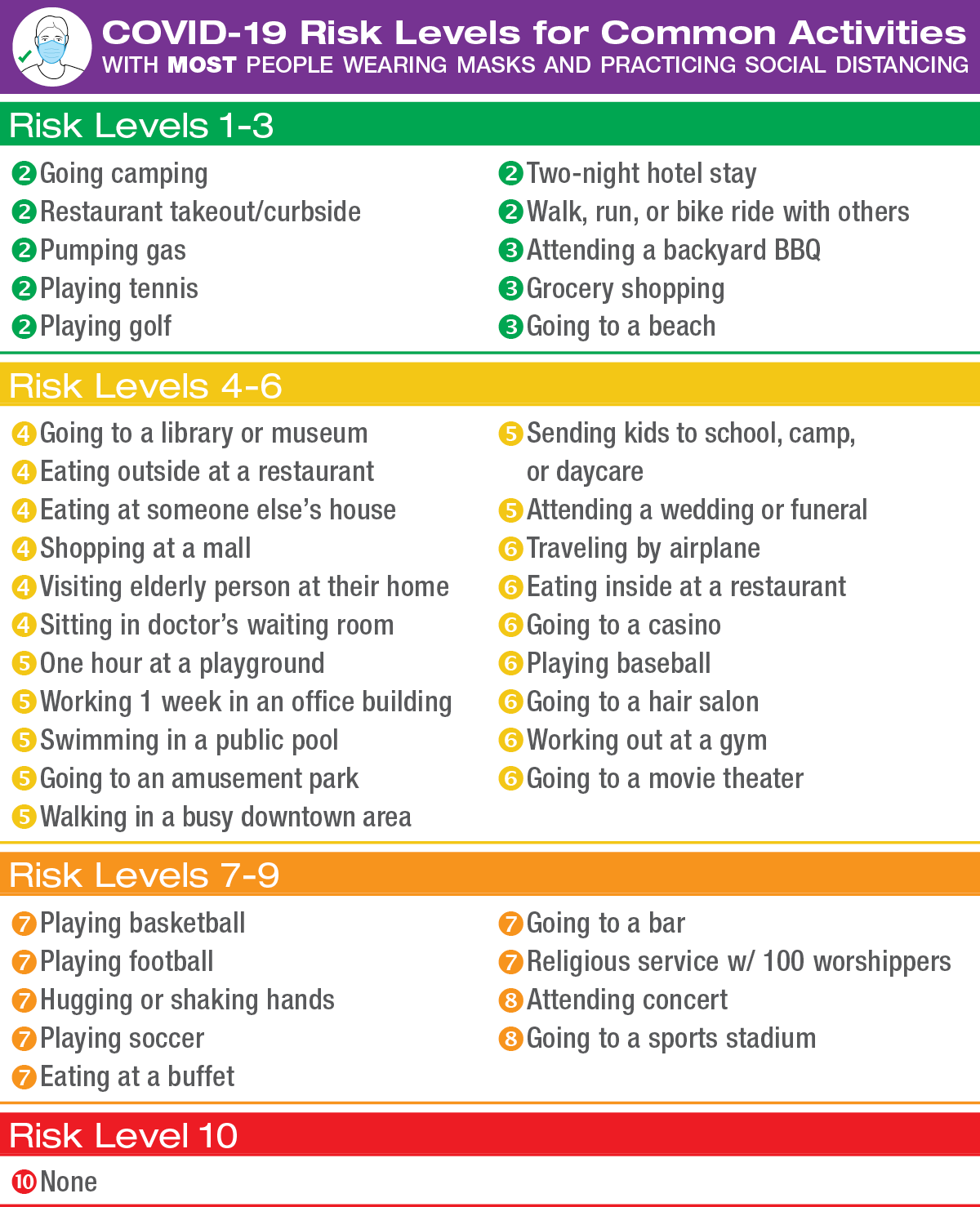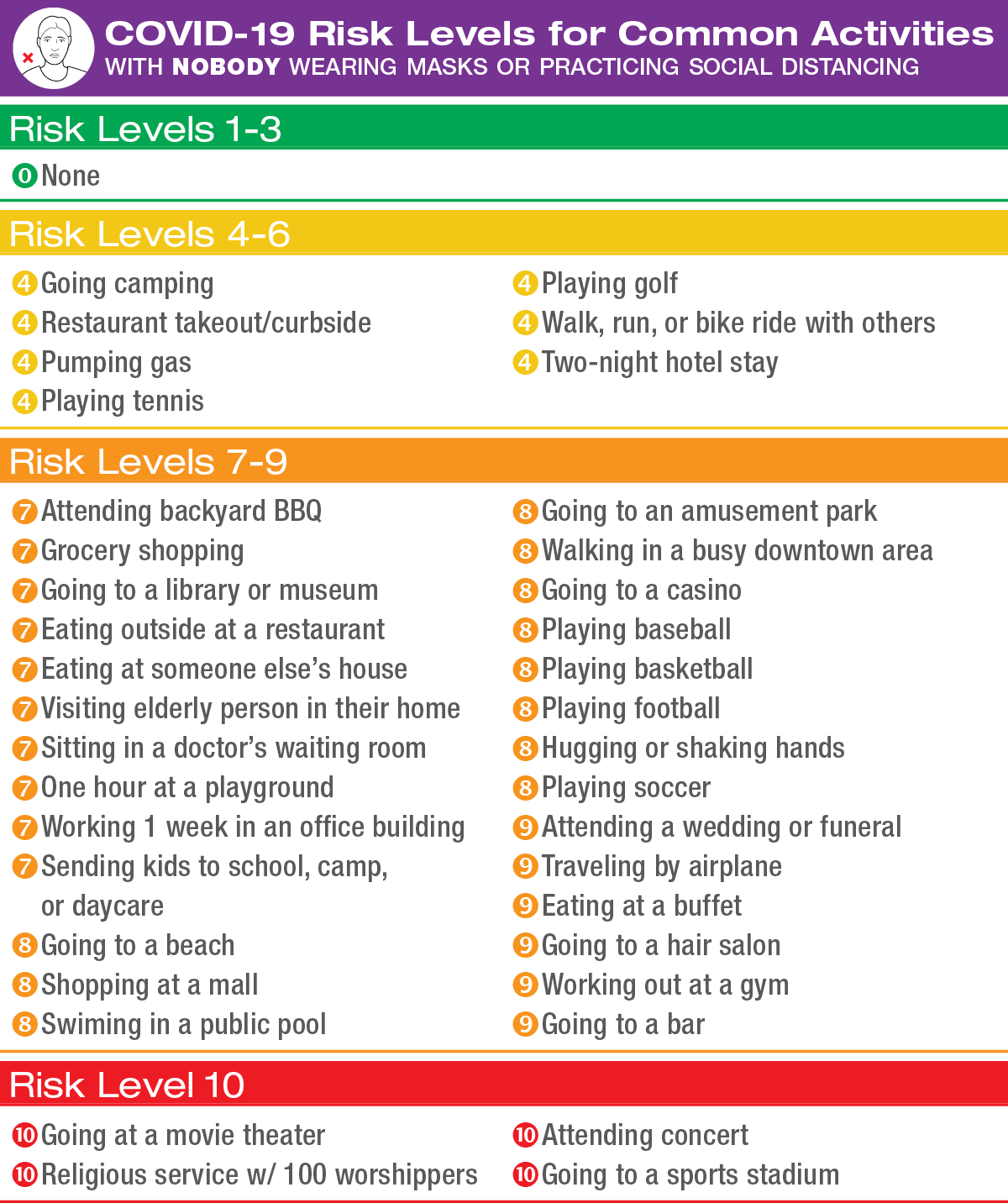Activities are rated with and without masks and social distancing
As all of us struggle to find our way amid a new normal, it’s not unusual to wonder what’s safe and what’s not. Is it safe to eat at a restaurant? Is it risky to get a manicure? Can I go to the gym?
With so much information — and misinformation — available, sometimes it’s hard to know.
Andrew Janowski, MD, a Washington University infectious disease specialist at St. Louis Children’s Hospital, recently shared with KSDK TV-5 On Your Side the risk of being exposed to COVID-19 when participating in some common activities — with and without the use of masks and social distancing.
As shown in the charts below — on a scale of 1 to 10, with 1 being the lowest risk and 10 the highest – the number of activities at the high-risk level dramatically decreases when social distancing and masks are used. Note that no activities are ranked in the lowest risk level when masks aren’t used and social distancing isn’t practiced.
The risk of COVID-19 in indoor settings, such as salons and gyms, can be decreased when masks are used, even if social distancing can’t be maintained.
And although outdoor activities are generally considered safer than indoor activities, Dr. Janowski said there are still risks outdoors.
“In general, the risk level of an activity increases as you move from outdoor activities with participation of a few people — like camping — to outdoor activities where a crowd is expected, like a concert,” Dr. Janowski said.

Dr. Janowski said the riskiest activities without a mask or social distancing include:
- going to a movie
- attending a church service with more than 100 people present
- going to a concert or an event at a sports stadium
And even the least risky activities — such as pumping gas or walking outdoors with others — have a risk level of at least 4 when no one is wearing a mask or practicing social distancing.

In short, the keys to staying as safe as possible remain wearing masks, social distancing and practicing good hand hygiene any time you’re in contact with people who live outside of your home.
“Until an effective vaccine is developed, our best weapons against COVID-19 are wearing masks and social distancing,” Dr. Janowski said. “This is the new norm and will have to be part of our daily habits for the rest of 2020, and probably well into 2021.”